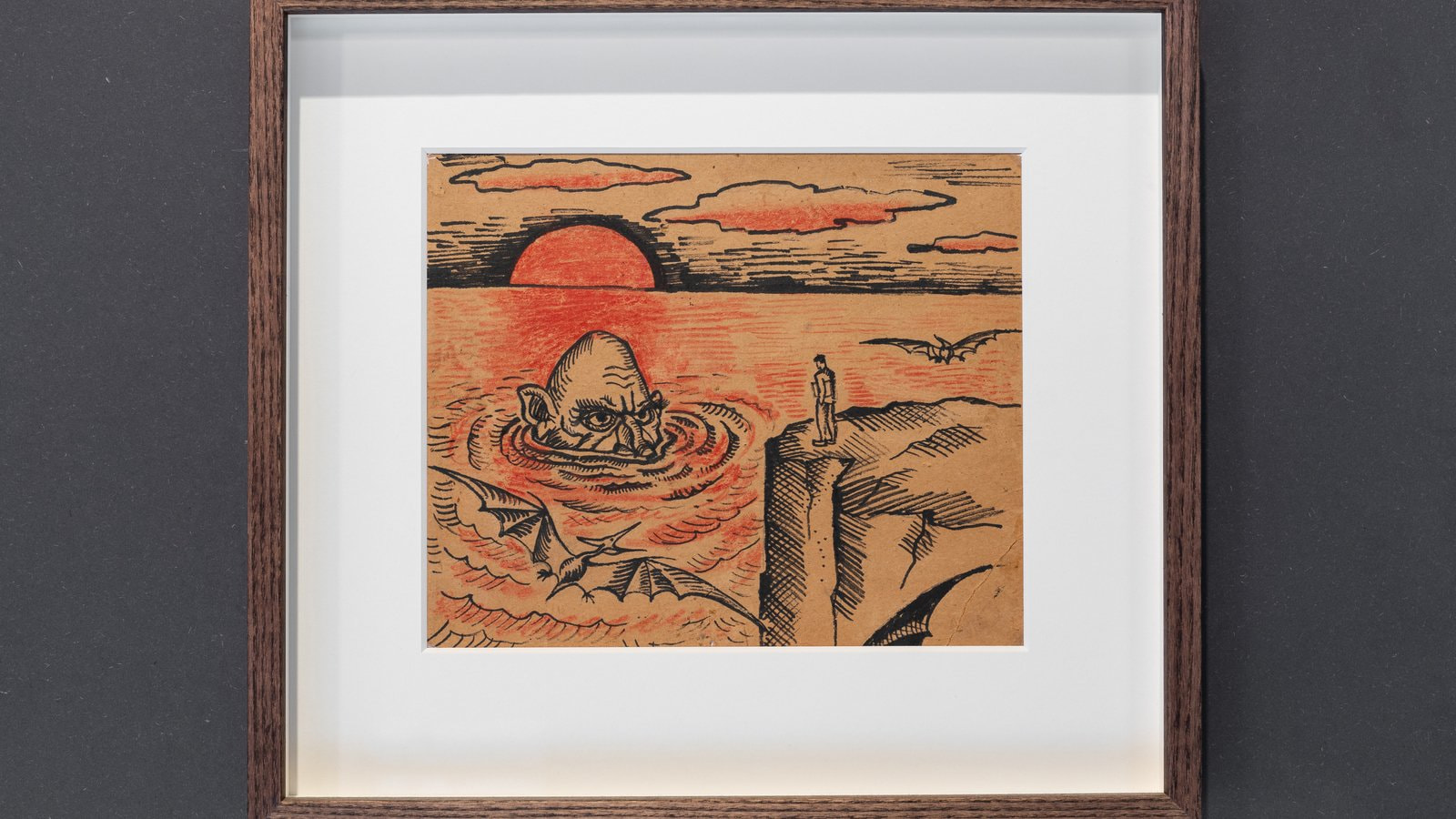Sekretiki No. 26. Yuzhinsky Lane’s “Sexual Mystics”
In Poems about Death—something like La Rochefoucauld’s Maxims and Blaise Pascal’s Thoughts for the late socialist era—Vitaly Komar and Alexander Melamid point to a tendency in humans to seek happiness in something finite, something countable. “An intellectual in Russia knows that if a banned book (which they would perhaps never even read) is published, it will make them feel better,” they wrote. “Ten such books will make one feel ten times happier.” But this simple mathematics doesn’t work with the books from Sergey Zhigalkin’s library.
They differ from the usual “forbidden stuff ” and samizdat as much as Brahman differs from Atman in Indian philosophy: the two notions are separated by a spiritual eternity. The Tibetan Book of the Dead, a dictionary of symbols, and various other publications defined the atmosphere of writer and mystic Yuri Mamleev’s apartment in Yuzhinsky Lane, described by the artist and writer Vladimir Kovenatsky as “a weird wax museum bringing together sullen Moscow schizoids to have some fun.” Readings of Mamleev’s short stories and the poems of Evgeny Golovin, discussions of esoteric literature and drinking pure alcohol—an act akin to pure mathematics—it all happened here. “To drink wine and to dream of God,” to quote Mamleev’s own motto for Yuzhinsky Lane, which existed throughout the 1960s and disappeared with the demolition of the building.
At the time it wasn’t necessary to be fond of Gurdjieff, Blavatsky, Steiner, and the like in order to sense the illusory nature of the border between the real and the other world. “We were not real,” said Ilya Kabakov in an early 1990s interview. “I don’t remember myself living in the reality called the Soviet Union. We lived within a small circle of people, we fantasized, and we shared those fantasies with each other.”
Sociologist Elena Zdravomyslova defined such self- perception as a typical strategy of retreat by Soviet “bohemians,” explaining it as a means of adapting to the “context of structural tension between officially proclaimed goals and the social norm.” The discrepancy between goals and norms forced people to choose either the former (and, simply speaking, become a politician) or the latter (and live the life of a philistine). Those who couldn’t identify with this paradigm “retreated.” The West, commonly idealized by Soviet dissidents, had its own version of this strategy. Many American intellectuals considered the war in Vietnam to be an act of imperial violence. The land artists of the 1970s (Michael Heizer, Robert Smithson, Walter de Maria, Robert Oppenheim, Nancy Holt, et al), who held similar attitudes to American dissidents, were confident that sculptural gestures could live outside institutions, the commercial sector, and the military- industrial complex. This is how a series of monumental sculptural “retreats,” such as de Maria’s The Lightning Field or Smithson’s Spiral Jetty, came to life. Nancy Holt even hid a number of sekretiki, encouraging her fellow land artists to find a poem buried by her on a desert island in Florida or in a nature reserve in Utah. Interestingly, “retreats” have become extremely popular again recently, not in the general meaning but in a special way: in the form of trips to the mountains, beaches, and islands accompanied by yoga instructors and qigong teachers. Their function remains the same as in the 1970s: to release the tension between the ideals and norms of society.
Underground artists adored Freud. Yuri Sobolev studied his article “Delusion and Dream in Jensen’s Gradiva.” Ülo Sooster, perhaps ironically, confessed in a letter to a friend that he had discovered “anal eroticism” in his psyche, which explained why he rarely answered letters but did so in detail. Although less preoccupied with Freudian ideas, the artist and poet Vladimir Kovenatsky, as often happens, did things that beg psychoanalytic interpretation.
Thanks to Kovenatsky, the gatherings of passionate seekers of esoteric experiences in Yuri Mamleev’s apartment in Yuzhinsky Lane became widely known as meetings of “sexual mystics,” as this was the subtitle of the “art newspaper” which Kovenatsky showed there. Bohemians who came to Yuzhinsky in search of orgies left disappointed by the serious, even religious atmosphere within the circle of researchers into divine and otherworldly realms.
At Dawn is not the only self-portrait capturing his encounter with horror. In his memoirs, Mamleev recalled that Kovenatsky “had one drawing [. . .] in the foreground there is an artist sitting perkily with a canvas in front of him, and he [. . .] is drawing a nuclear explosion, a mushroom growing somewhere not that far away. This is Kovenatsky himself, his situation. The artist and the explosion of this world.” At Dawn brings together the figure in a self-portrait with a shaved monster whose head slowly emerges from the depths (a metaphor for the unconscious, according to Freud). The shaved head and distorted facial features refer to the, unfortunately, still popular stereotype of a mental hospital patient. It may be that At Dawn depicts the ghost of the serious illness that would soon swallow Kovenatsky, in the 1980s, after his experiments with psychoactive substances.
“But it cannot be that way,” Mamleev continued, commenting on the drawing with the mushroom cloud. “You cannot look into the eyes of your murderer and enjoy suffering his gaze. You cannot be permanently ruptured. The rupture should be followed by a breakthrough, resurrection, escape.” Today, Kovenatsky’s poems and drawings break through to the reader mainly thanks to references in the books and interviews of Viktor Pelevin, a contemporary writer who continues the Yuzhinsky Lane tradition of the psychedelic representation of Russian everyday life.
